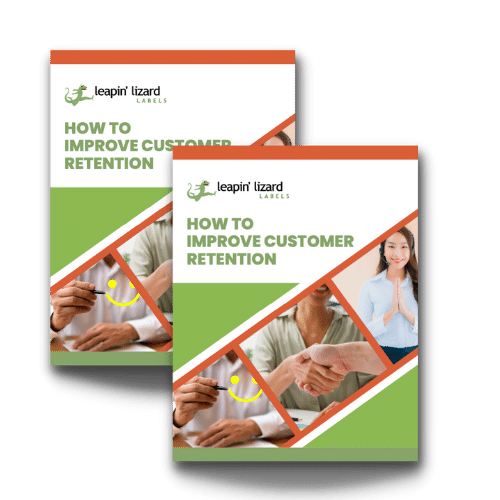Here at Leapin’ Lizard Labels, we care about the environment — after all, it’s the only one we’ve got. So we take measures every day to ensure that our labels are produced ethically, and we make efforts on a personal level to have a more positive impact on the earth. We’re eco-friendly, and we love to work with other outfits that cherish the environment as much as we do. Here’s how we make our custom printed labels, as well as our printing processes, a bit more eco-friendly, and how we take action to reduce our personal footprints.
Our Eco-Friendly Labels
Our labels are eco-friendly. We only use water-based inks when we print our labels. While solvent-based inks are toxic and harmful if ingested, our water-based inks are far less harsh and hazardous.
It’s not just our ink that’s eco-friendly. We also have print stock that is made of recycled materials—just ask us about our most eco-friendly option.
Our Eco-Friendly Processes
Our printers, machines, and, well, the whole office run off of clean energy. We invest in wind-generated electricity, and we strive to convert to a 100 percent solar-powered office. Offsetting our energy costs with clean energy provides a variety of benefits: First and foremost, it reduces the amount of pollutants that are pouring into the atmosphere. And second, a percentage of our energy dollars go towards improving green energy technologies and green energy production—which will lead to lower energy costs and more energy availability in the future. The green energy movement is expanding, and we’re ecstatic to be a part of it.
Beyond consuming clean energy, we also strive to reduce waste in any way possible. That’s why our small batch printing is ideal. Regardless of the print size, we can print the exact amount you need—no more and no less. We have no minimum batch size. That means that you won’t have to waste a few extra hundred labels that roll off the production line.
Plus, thanks to our digital label printing technique, we don’t rely on the films, chemicals, plates, and presses that other companies use. Our printing process is far less demanding, and it produces far less waste. We don’t even use as much label backing material as most label makers.
Small Steps Towards Smaller Footprints
We can all take small steps to reduce our impact on the environment. Here at Leapin’ Lizard, we all do our part. We’re conscious about our impact, and we take the environment into consideration with our everyday tasks. That’s why we encourage biking to work. And that’s why we recycle or donate anything that we no longer use. It’s these simple steps that we employ every day to make a footprint.

Leapin’ Lizard’s Eco-Friendly Product Labels
With short-run prints, eco-friendly ink, and green processes, you can’t go wrong when you partner with Leapin’ Lizard for our printing services. Feel free to learn more about our eco-friendly practices, or if you’re ready to get started, get a free quote for your next project.


